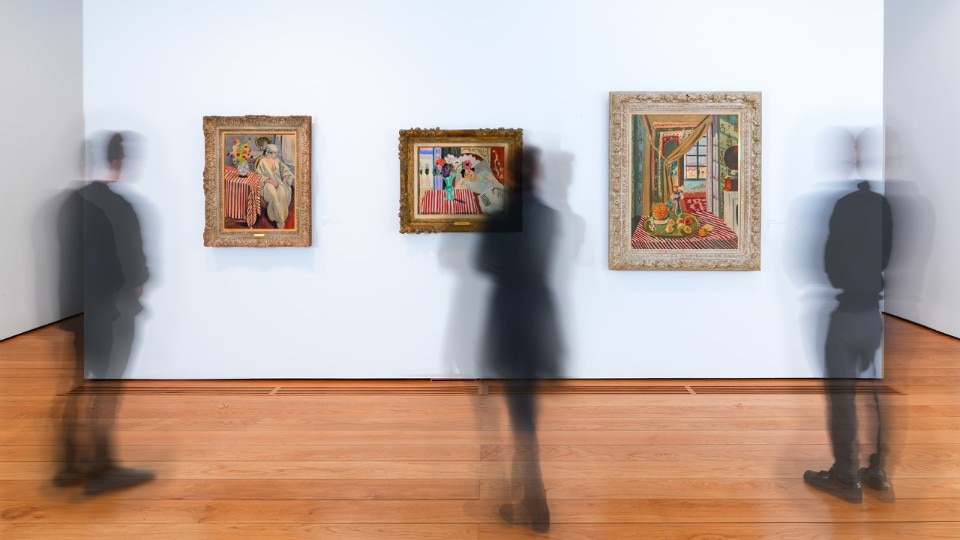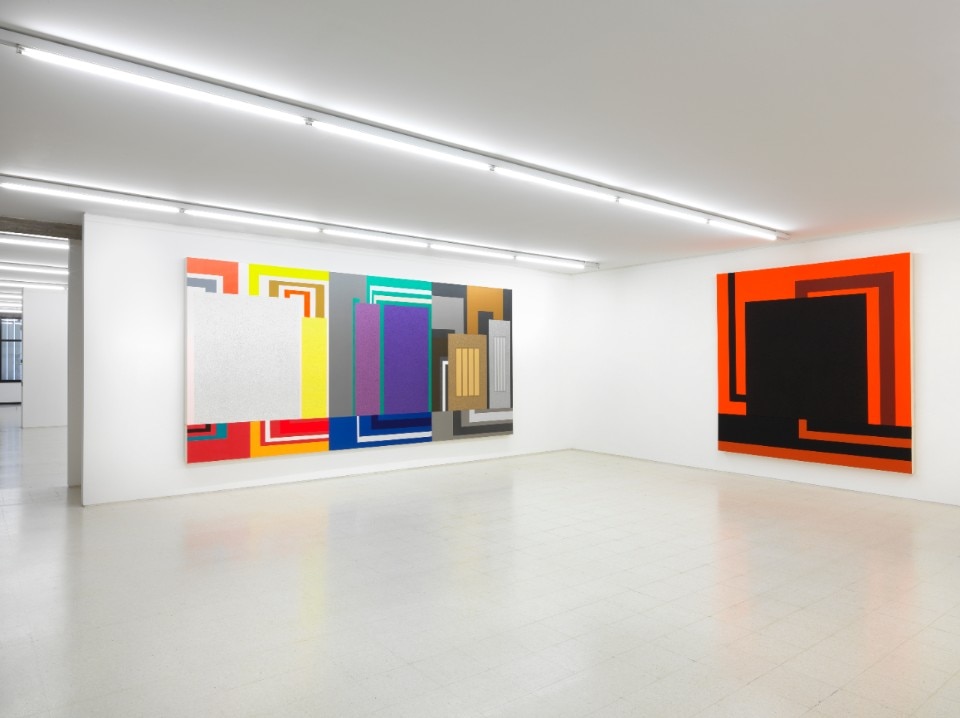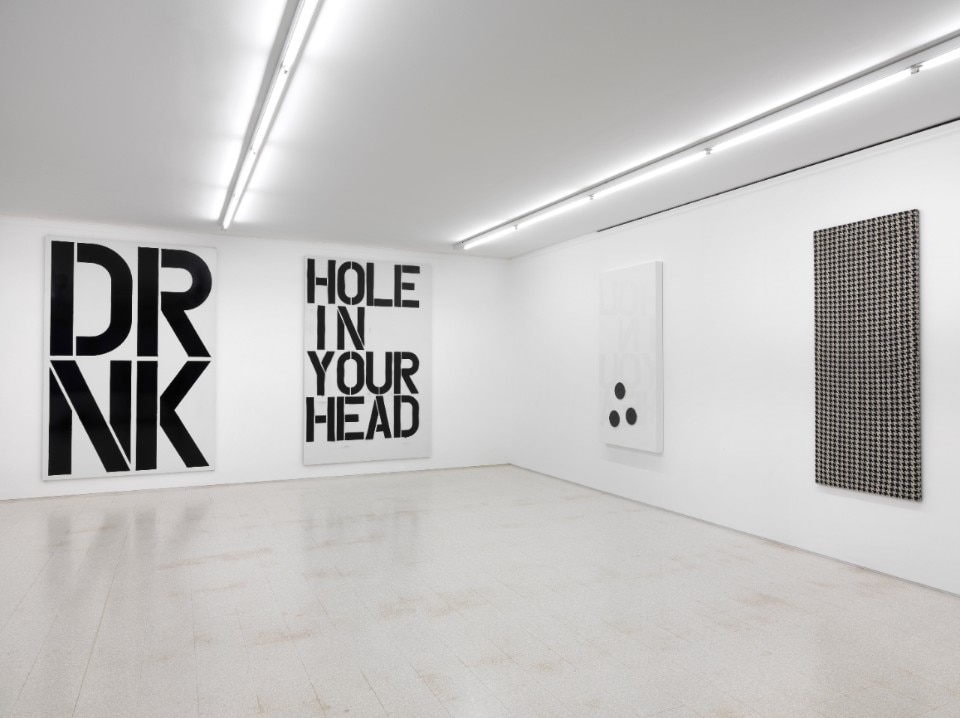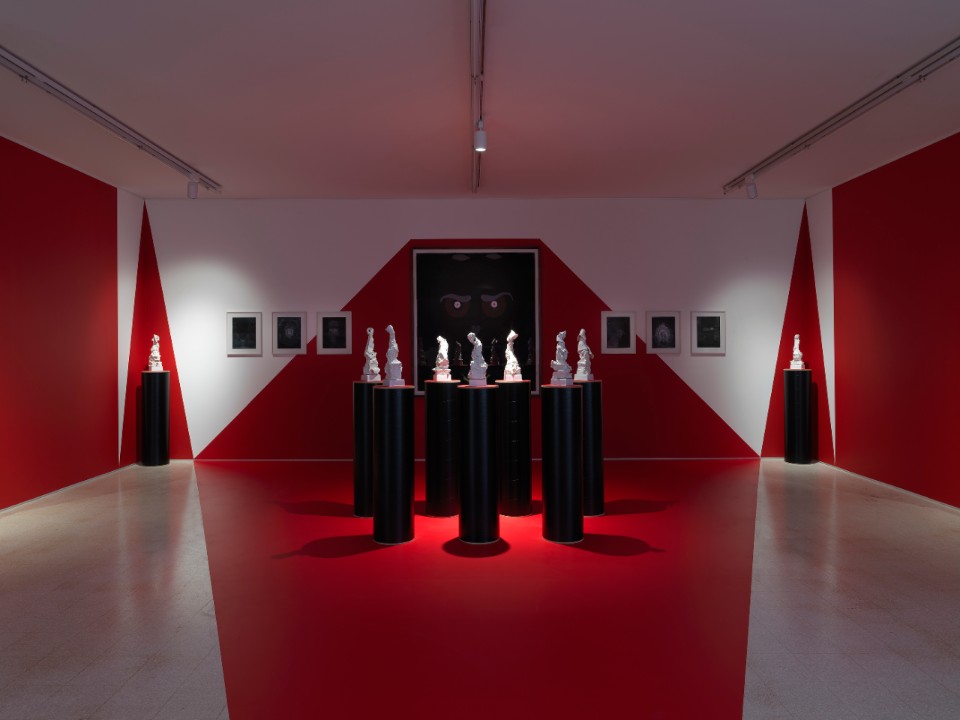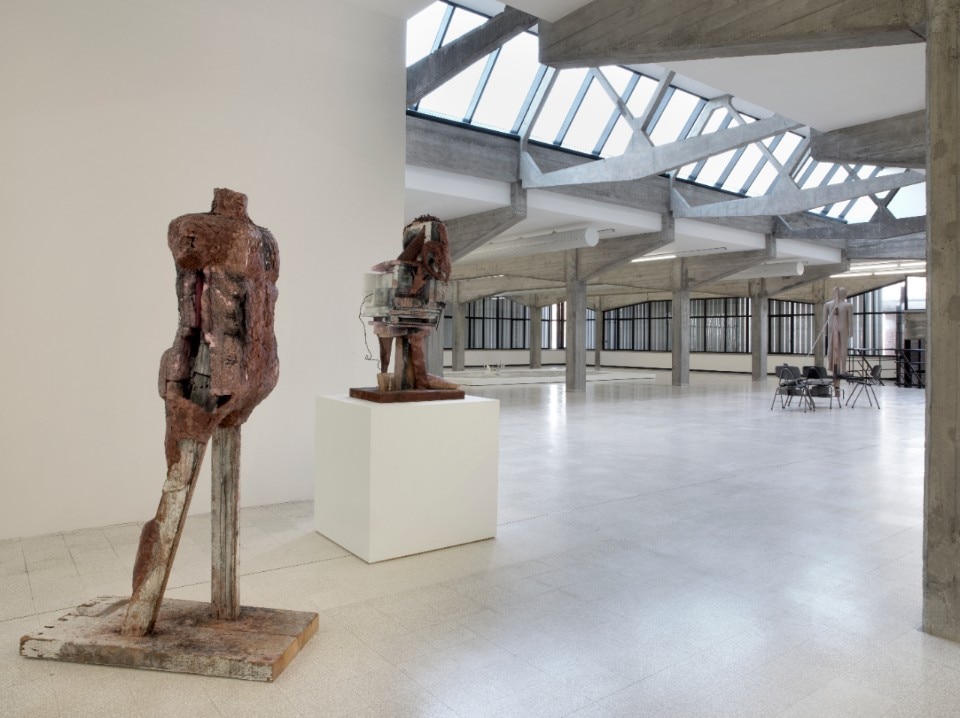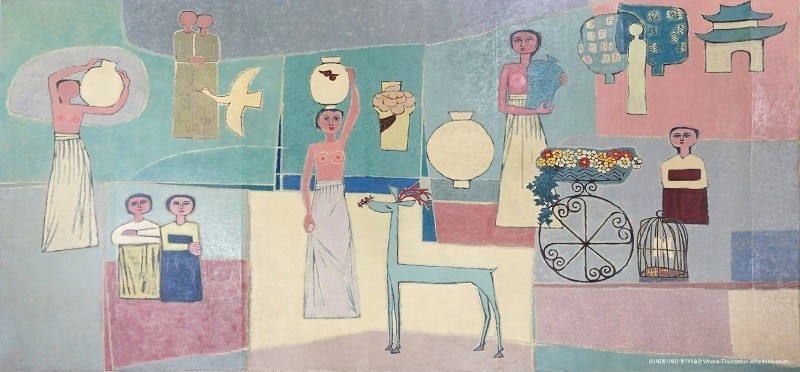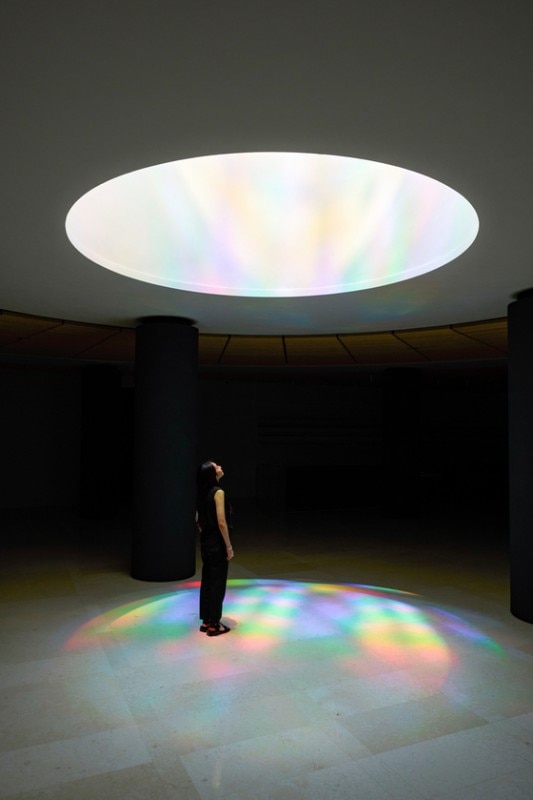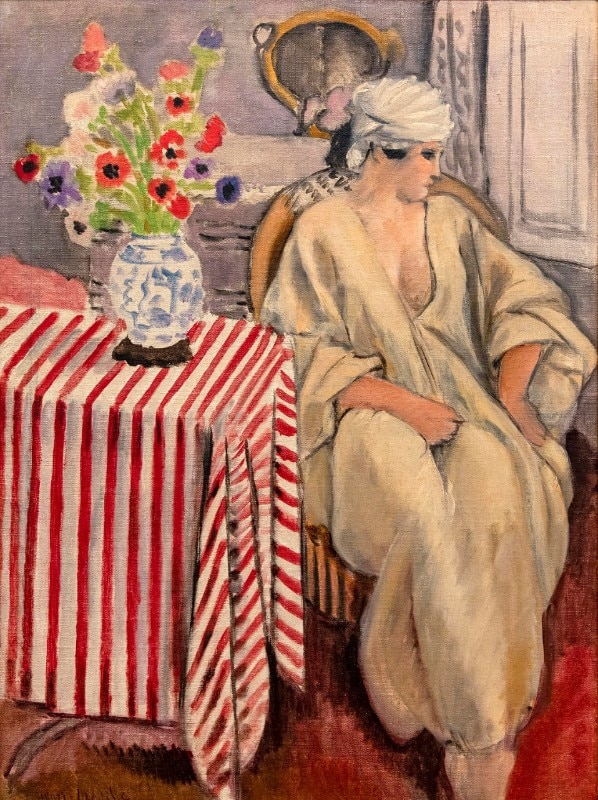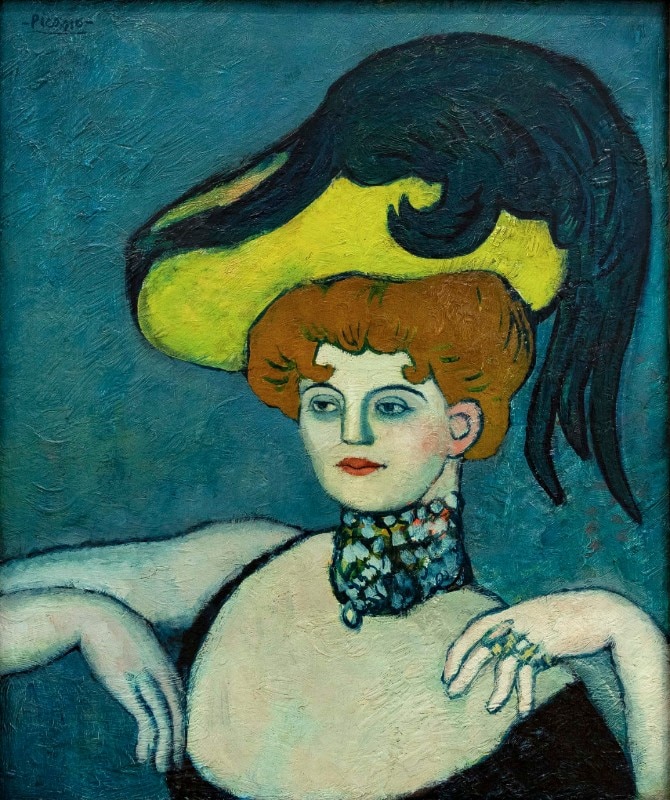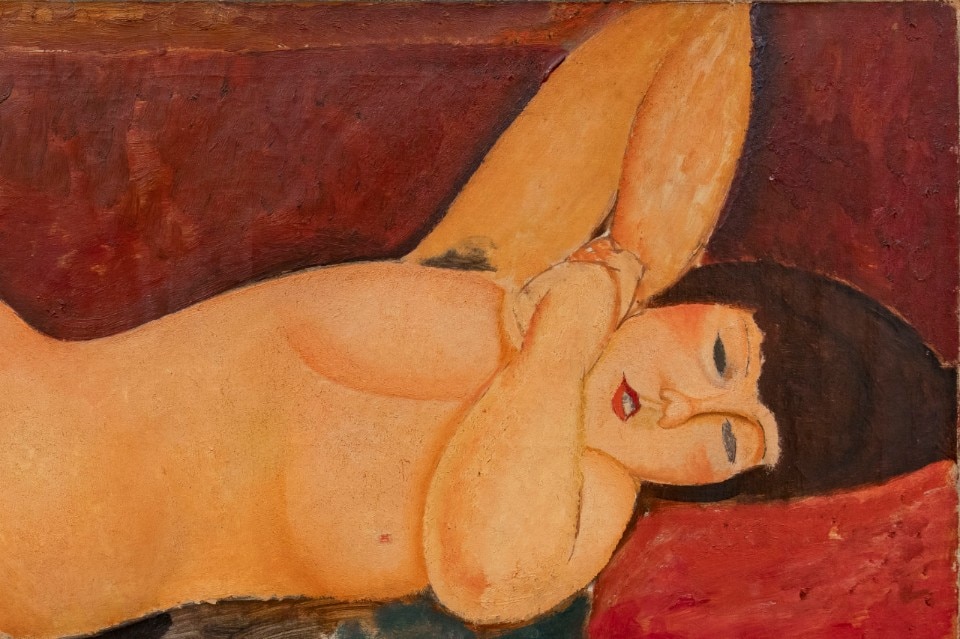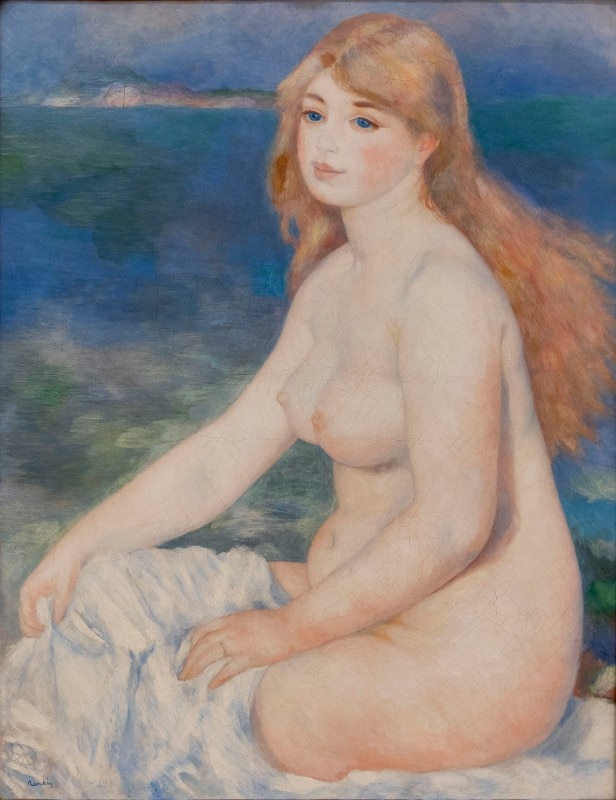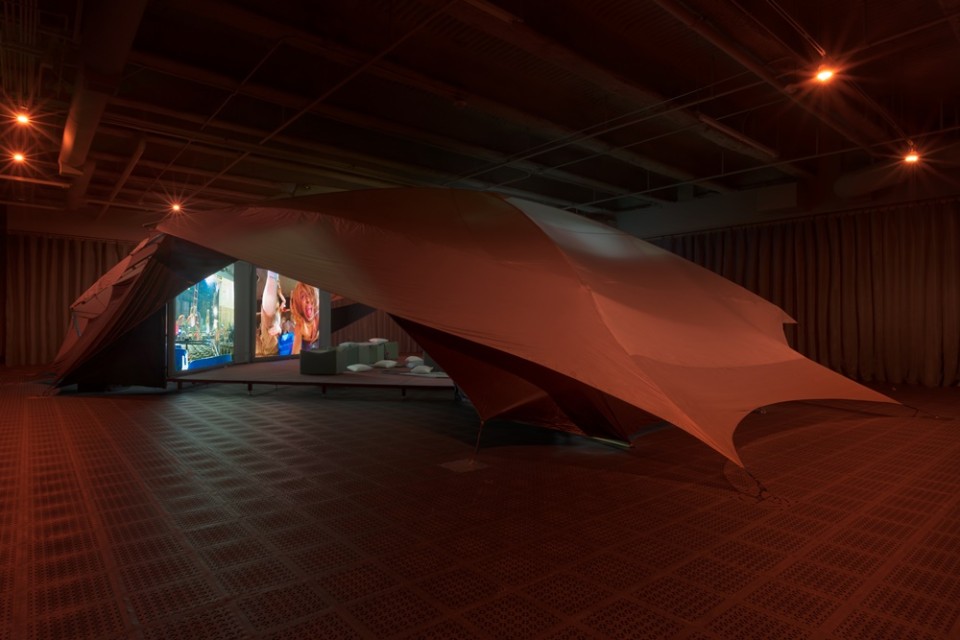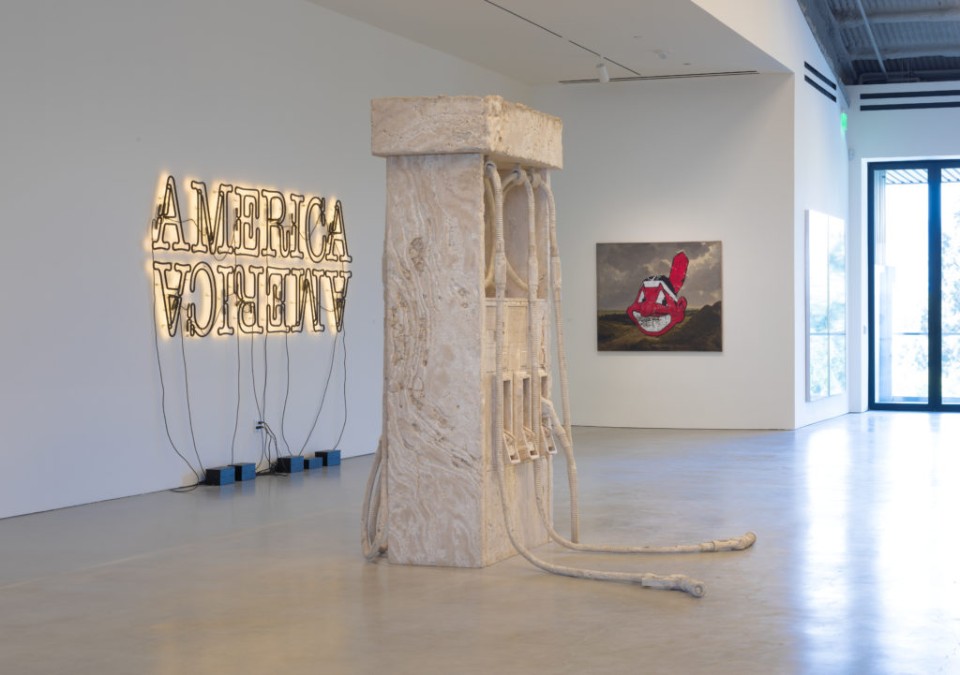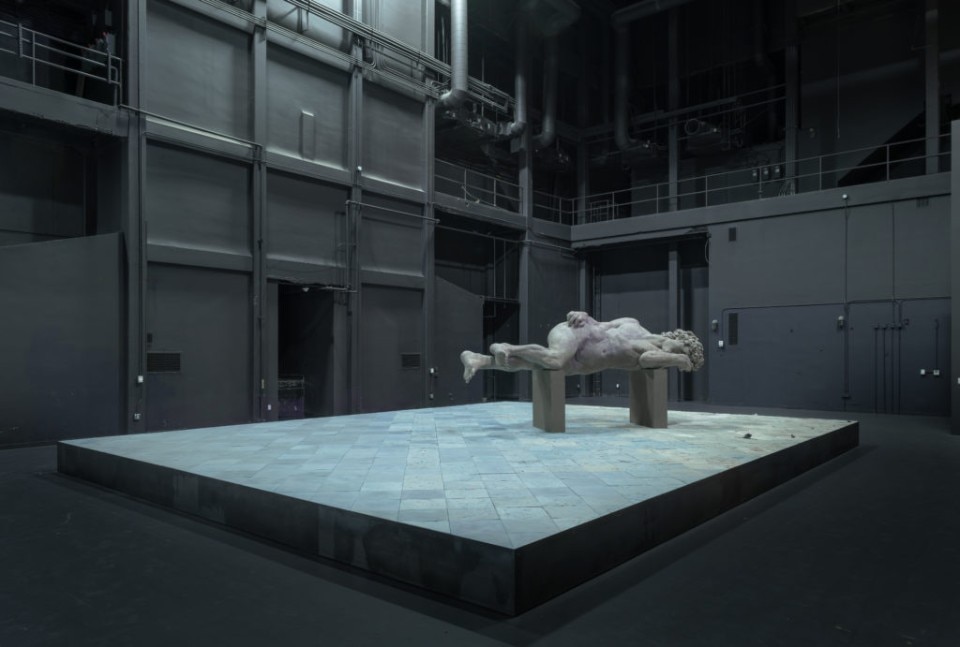In the collective imagination, collectors are often seen as highly competitive figures. However, the most respected ones are united not by competition, but by the importance they attach to connections with family, friends, scholars, visitors, and even fellow collectors. These relationships, nurtured and strengthened over the years through their collections, underscore how they often describe their acquisitions, revealing the central role of the social element. Rarely do they mention a solitary encounter with an artwork or mere curiosity about the past.
Art is the avenue by which artists have always expressed their thoughts, opinions and emotions. What collectors have learned is that art can serve as a vehicle of expression for them as well.
During the Renaissance, the Medici of Florence, the Gonzaga of Mantua, the Montefeltro of Urbino, and the Este of Ferrara formed the first rich art collections, comprising ancient sculptures, commissioned works, and decorative art. In the late 18th century, Catherine II of Russia, known as Catherine the Great, echoed this passion. Obsessed with European and ancient painting, she transformed the Winter Palace in St. Petersburg into a personal museum and cultural centre. In the early 20th century, an emblematic figure like Peggy Guggenheim emerged, embodying a timeless commitment to contemporary art with decades of dedication, confessing to having devoted “her entire life to art collecting.”
Russell W. Belk, an American academic and researcher specializing in collecting, maintains that objects within a collection tend to acquire a “sacred” status, extraordinary and capable of generating reverence.
Collectors are also motivated by the message they can send through their collection, once these social networks are established. Art is the avenue by which artists have always expressed their thoughts, opinions and emotions. What collectors have learned is that art can serve as a vehicle of expression for them as well. Our splendid task is to recognize the commitment and desire behind these cultural heritages, uncovering their multiple possible meanings. Observing our times, we identify those shaping the collections that – perhaps like the historicized ones – we will come to consider essential references for understanding culture and art.
1. Maramotti Collection
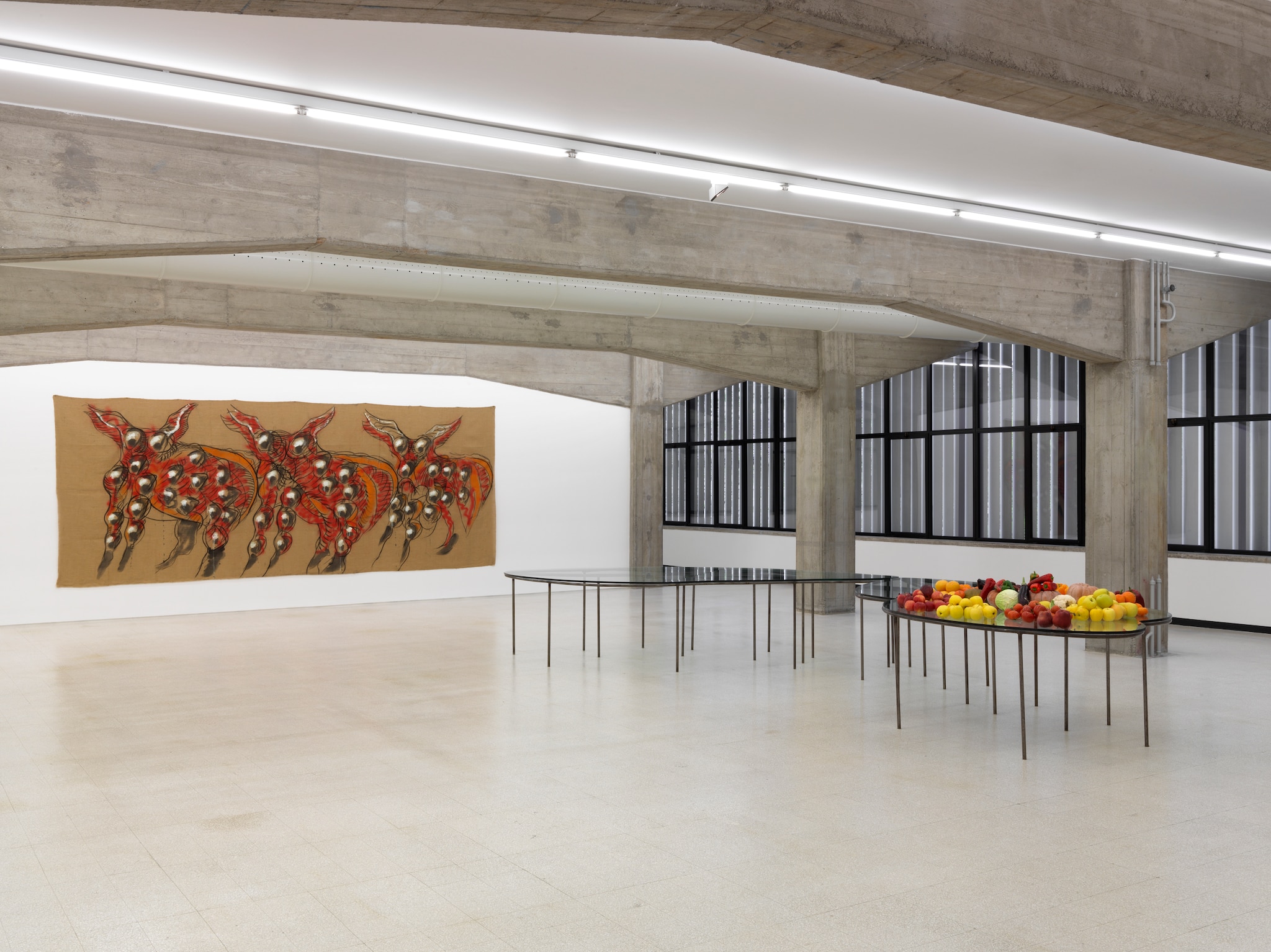
In Reggio Emilia, Achille Maramotti, founder of Max Mara, transformed the former fashion factory, designed in 1957 by architects Pastorini and Salvarani, into the headquarters of this astonishing collection. Architect Andrew Hapgood renovated the space with a respectful approach, preserving its original essence. Linear skylights and new internal volumes create a natural dialogue between art and light, and the galleries generously open to natural light.
The collection’s journey begins with a selection of European paintings from the Expressionist and Abstract movements of the 1950s and continues with a series of paintings ranging from Roman Pop Art to Arte Povera, from Transavanguardia to German and American neo-expressionism, and finally to the works of American New Geometry of the 1980s and 90s. In 2019, as part of the Rehang project, the final rooms on the second floor underwent renovation to showcase a selection of projects displayed during the first decade of the Maramotti Collection’s existence, thereby commemorating its extensive historical journey.
2. Niarchos Family Collection
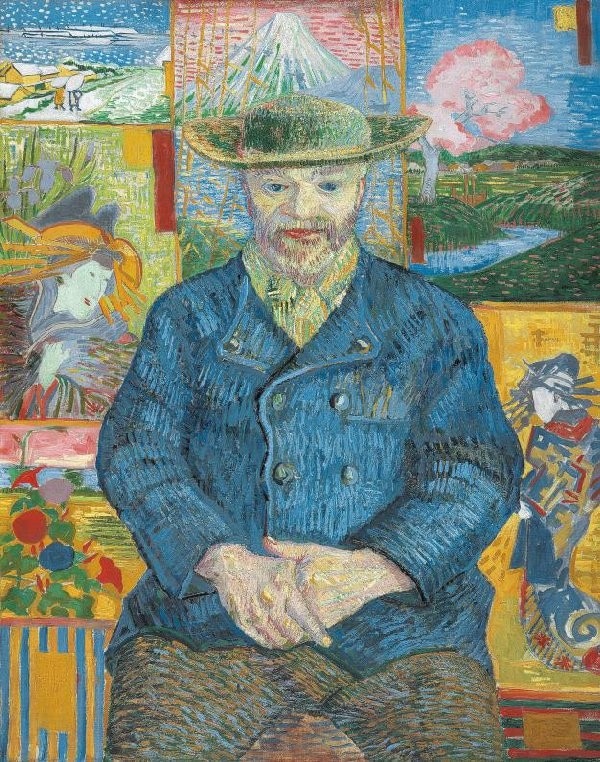
Philip S. Niarchos, the son of Greek magnate Stavros Niarchos, owns and is the heir to one of the world’s most significant private collections of Impressionist and contemporary art. He is also a board member of the Museum of Modern Art (MoMA).
To grasp the collection’s magnitude, one needs only to know that one of his father’s most notable acquisitions, Pablo Picasso’s “Yo, Picasso” (1901), was purchased in 1989 for $47.8 million. Niarchos has continued and continues to enhance the collection with equally valuable works such as Vincent van Gogh's “Self-Portrait with Bandaged Ear”, acquired at a Christie’s auction for a remarkable $71.5 million. In 2007, it was reported that Niarchos spent a record $17 million on Andy Warhol's “Green Burning Car I” (1963).
The collection is not open for public viewing, but individual pieces are loaned out for international exhibitions. This was the case for the retrospective honouring the centenary of Van Gogh’s death, where five works, including “Portrait of Père Tanguy” (1887), were displayed at the Van Gogh Museum in Amsterdam.
3. Eli and Edythe Broad Collection
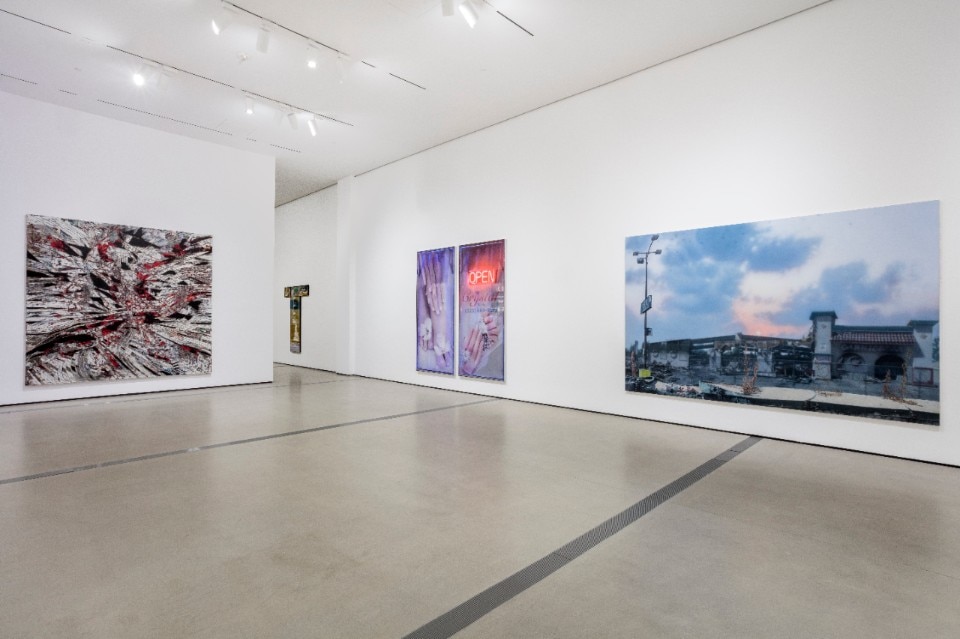
Philanthropists Eli and Edythe Broad have shaped the world’s most important post-war and contemporary art collection over approximately forty years: the Eli and Edythe L. Broad Collection, visible at the Broad Art Foundation. Given the size of the collection, approximately 2,000 works signed by more than 200 artists, the Broad Art Foundation has operated as a sort of “global lending library” since 1984, allowing 8,000 works to travel to about 500 museums, galleries, university institutions, and open to the international public.
In September 2015, the Broad opened in Los Angeles, housing both the contemporary art museum and the headquarters of the Broad Art Foundation and the collection. Designed by Diller Scofidio + Renfro in collaboration with Gensler, the building follows the concept of “veil and vault,” merging two key elements: the exhibition space and the collection headquarters.
The “vault” emphasizes the importance of the collection in the museum experience. Its opaque and heavy surface remains visible, suspended in the middle of the building. Its underside shapes the foyer below, while its upper surface becomes the floor of the exhibition space. The vault also serves as storage for unexhibited works, hence the designers included windows for visitors to admire the interiors. The “veil,” a light, honeycomb structure, covers all sides of the vault and extends along the gallery, allowing natural light to filter inside.
4. David e Ezra Nahmad
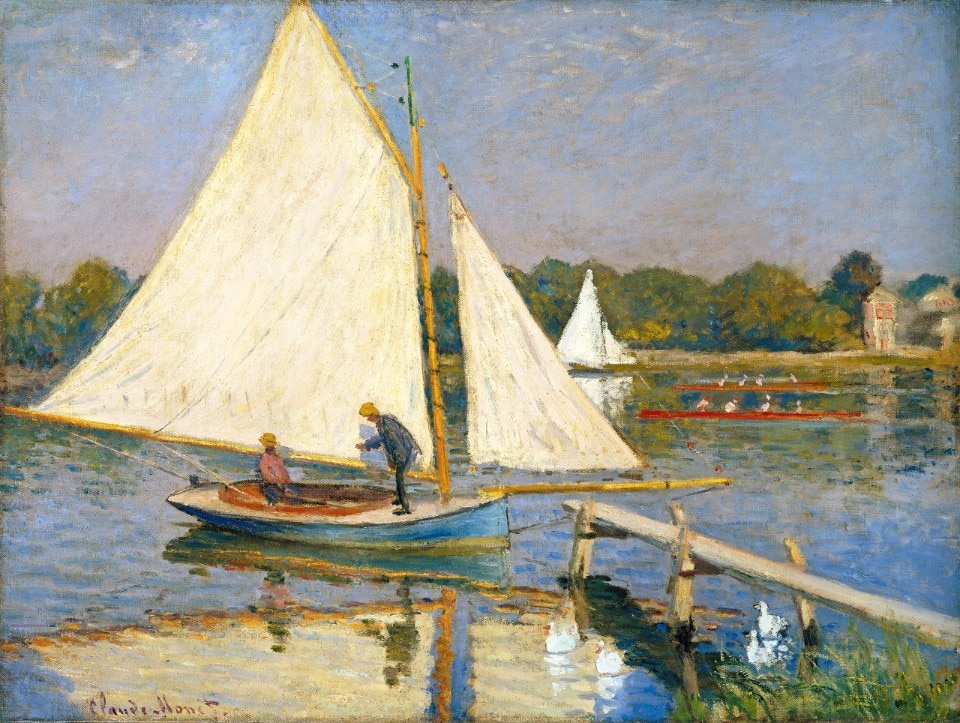
Obsessed with 20th-century masters like Picasso, Rothko, Renoir, Monet, and Matisse, Syrian-born brothers Ezra and David Nahmad have woven over time a rich network of influences and relationships, making them two of the most influential art dealers in the world.
The scope of their collection is astounding, both in terms of volume and value: with about 4,500 works stored in Geneva worth between $7 and $8 billion, it is a tangible testament to their impact in the art world.
Their approach has always been distinguished by a particular philosophy, perfectly expressed by David Nahmad: “Quantity does not count, it is the quality of the works I own that makes them precious.” Despite the Collection remaining private, the works collected by the Nahmads are frequently loaned to museums worldwide. Recently, in 2022, 16 of their Henri Matisse paintings were exhibited at the Musée Matisse, on the occasion of the retrospective “Matisse in the Nahmad Collection.”
5. Dean Collection, Swizz Beatz and Alicia Keys
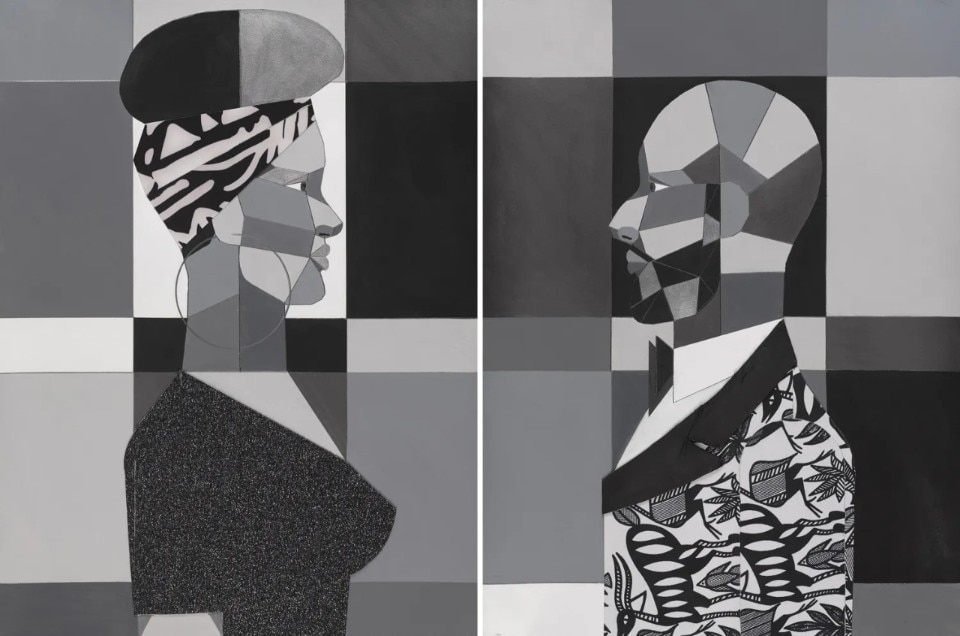
The Dean Collection of Swizz Beatz, a hip-hop producer, and his wife, musician Alicia Keys, is one of the world’s most important private collections of works by African-American artists, including Lorna Simpson, Derrick Adams, Mickalene Thomas, and Nina Chanel Abney. Positioned to support artists’ rights and bring attention to the issue of royalties in the secondary market, it supports initiatives like “Dean’s Choice” for greater equity in the art world.
“We are young artists of colour and really focus on collecting young artists of colour”, Keys explained, adding that she considers such concentration a cultural duty.
In ten years, the Dean Collection has gathered over a thousand works by a wide variety of artists, including Kehinde Wiley, KAWS, Jeffrey Gibson, and Ansel Adams. The themes of the works often concern power, history, race, and gender. The collection also stands out for the high number of female artists, like Toyin Ojih Odutola, Deana Lawson, and Deborah Roberts, as well as self-taught artists, like young painter Reginald Sylvester II. Immersing in Black art, Dean realized that “there were not enough of us collecting ourselves”.
6. Lee Kun-Hee Collection
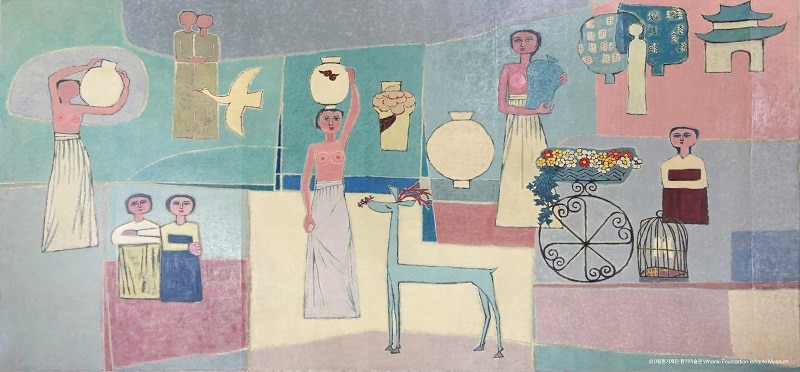
According to some art dealers, the exact number of works comprising the collection of the late Lee Kun-Hee, former Samsung president, remains a mystery. Many artworks are reportedly still locked away in family bunkers. The known collection itself is extraordinary, comprising 23,000 pieces.
Among the Korean artists are works by Jeong Seon, Kim Whanki, and Lee Jung-seop. Works by great masters such as Claude Monet, Salvador Dalí, Pablo Picasso, and Marc Chagall are part of the selection of Western artworks. After Lee died in 2020, his heirs donated the works to several museums, thus avoiding inheritance taxes and raising numerous debates on Korea’s cultural policy. The goal is to make the collection accessible to the public by 2027.
Meanwhile, the Leeum Museum of Art in Seoul, founded by Lee in 2004, has been reborn under the leadership of his son Lee Seo-hyun, who is continuing the task of promoting both traditional and contemporary art, with works by giants like Alberto Giacometti, Kim Whanki, Lee Bul, and Mark Rothko. It is a grand production, with three buildings designed by world-renowned architects: Rem Koolhaas, Jean Nouvel, and Mario Botta.
7. Agnelli Collection
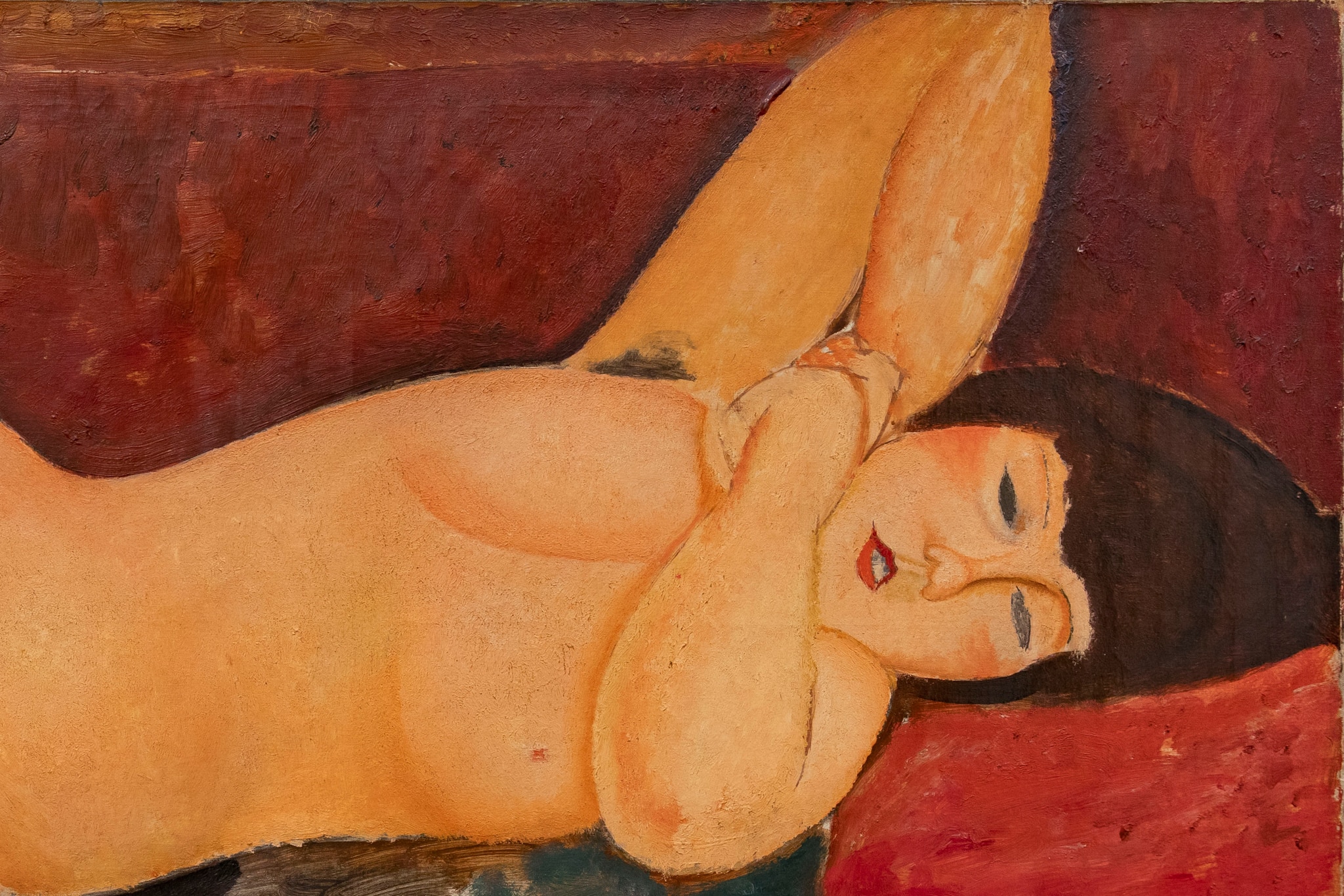
The Agnelli Art Collection is one of the most important in Italy. Regrettably, it has become the focus of media attention due to disputes over its inheritance. A key figure in the history of this collection is Gianni Agnelli, entrepreneur and Fiat patron, who passed away in 2003, and his wife Marella Caracciolo, who died in 2019. The couple, sharing a deep passion for art, amassed hundreds of pieces over their lifetime. In 2002, they inaugurated the Agnelli Picture Gallery, located on the top floor of the Lingotto in Turin, designed by Renzo Piano.
After the Lawyer’s death, three real estate properties containing artworks passed to his wife Marella, and subsequently to their daughter Margherita Agnelli. These works, including paintings by artists such as Bacon, Monet, Balla, de Chirico, and Gérôme, have recently been at the centre of a legal controversy, as it appears some of these pieces have disappeared.
Hoping these works will soon come to light and be accessible again, the Agnelli Picture Gallery remains a focal point of interest for understanding the taste of the Agnelli couple. The Scrigno, the suspended structure on the roof of the Lingotto, indeed houses 25 masterpieces, part of the collection, ranging from the eighteenth to the mid-twentieth century, including Méditation by Henri Matisse and La Baigneuse blonde by Pierre-Auguste Renoir.
8. Rubell Family Collection

Visits to artist studios, exhibition spaces, fairs, galleries, biennials and museums. Long conversations with artists, curators and gallerists. This is the methodology by which New York husband and wife Mera and Don Rubell have become the owners of an extraordinary collection that has, over time, enabled the creation of some 50 exhibitions, including the iconic “30 Americans,” “Keith Haring: Against All Odds” and “NO MAN’S LAND,” mounted in the leading international museums.
Since 1965, when Don and Mera Rubell purchased their first work on an instalment basis, they have always favoured artworks by emerging or neglected artists in the marketplace, many of whom have gone on to become famous: Jean-Michel Basquiat, Cecily Brown, Keith Haring, Yoshitomo Nara and many others.
Today their collection of some 7,400 works is divided between two venues: the Rubell Museum, located in Miami’s Wynwood neighborhood and opened in 1993, and the Rubell Museum DC, opening in 2022 in the Southwest Waterfront neighborhood of Washington, D.C., which represents a significant expansion.
9. Gianni and Laura Mattioli
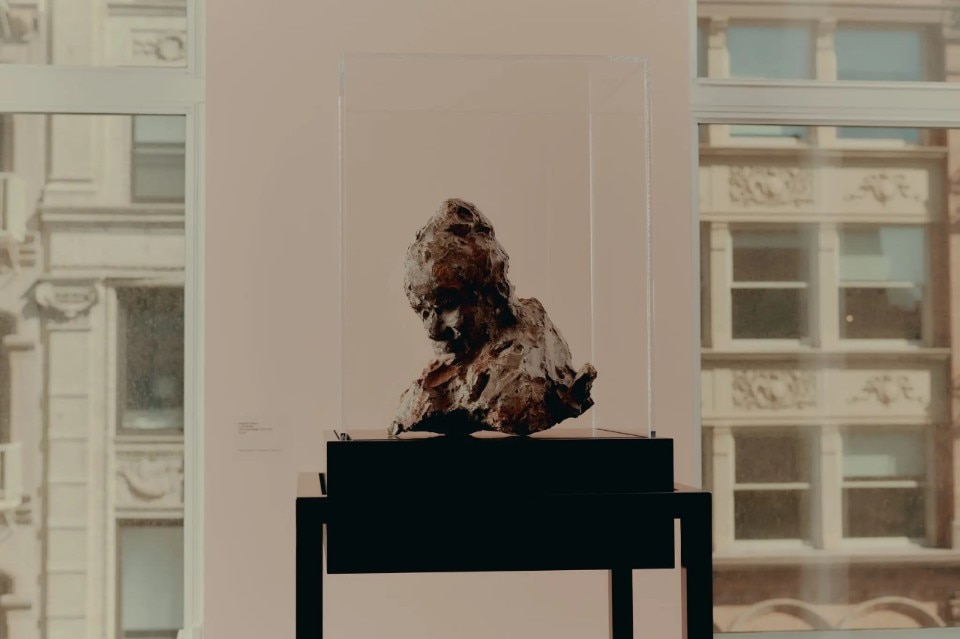
In 2022, in an article dedicated to her by The New York Times, Laura Mattioli was defined as “the Peggy Guggenheim of Soho.” Parallelism that suits her well: just like Guggenheim, Mattioli has fused her passion and commitment to art with her personal life, moving from one continent to another, from Milan to New York, to introduce American and international audiences to Italian art and culture.
The collection that Laura Mattioli inherited from her father, Gianni, began in the 1930s. At the time, the future collector worked as a messenger for a cotton merchant, but being a friend of the Futurists Depero and Azari, he began to collect works to create a collection of selected masterpieces of twentieth-century art. With artworks by Umberto Boccioni, Balla, and Severini, including Unique Forms of Continuity in Space and Abstract Speed + Noise, the collection grew to become one of the most significant in Italian Futurism, and in 1950 was inaugurated to the public.
Upon her death in 1977, along with her children heir to this ever-expanding collection in 2013, she founded the Center for Italian Modern Art (Cima) in New York, a landmark institution of Italian art in the United States and a training centre aimed at young researchers and students.
10. David Geffen
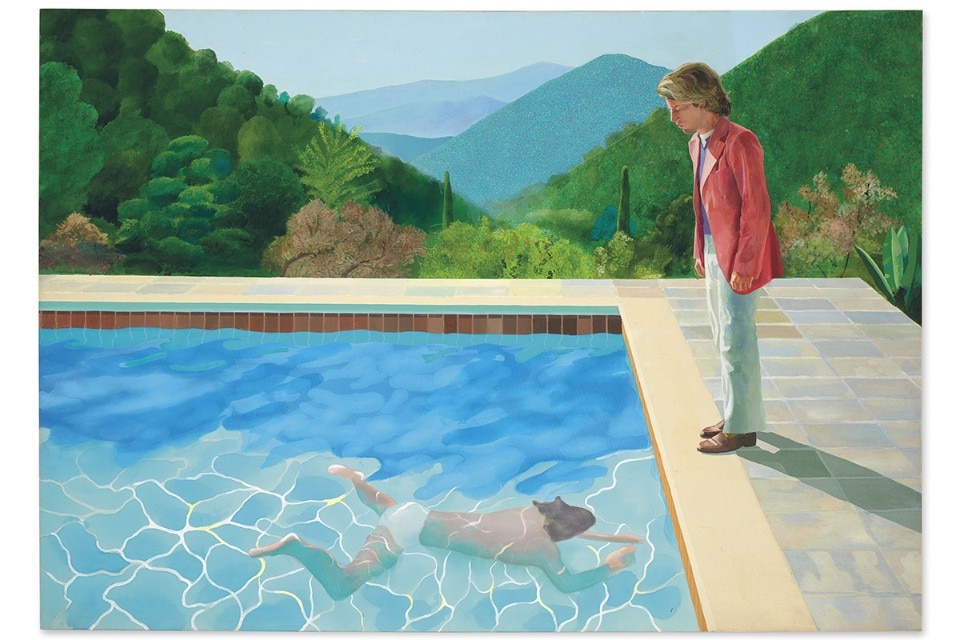
With a fortune of about 7.7 billion dollars, Geffen is among the most influential men in the world. His story embodies the myth of the American dream: born to Jewish immigrants in Brooklyn, he began his career in the mailroom of the William Morris agency, then became an agent and finally the founder of major labels and production companies like Asylum Records and DreamWorks.
His art collection, currently at around 2.3 billion dollars, consists mainly of works by exponents of abstract expressionism and pop art, such as Jackson Pollock, Willem de Kooning, Mark Rothko, David Hockney, and Robert Rauschenberg. Paul Schimmel, former curator of Moca in Los Angeles, stated: “Geffen's collection is to post-war American art what the Frick Collection is to Old Master painting”.
Despite owning works of great cultural value, Geffen rarely grants loans to museum institutions. However, with his donations, he supports various organizations, including the Los Angeles County Museum of Art (Lacma), to which he donated 150 million dollars in 2017. And in this regard, it is said that Geffen might leave part of his collection to them.
11. Zabludowicz Collection
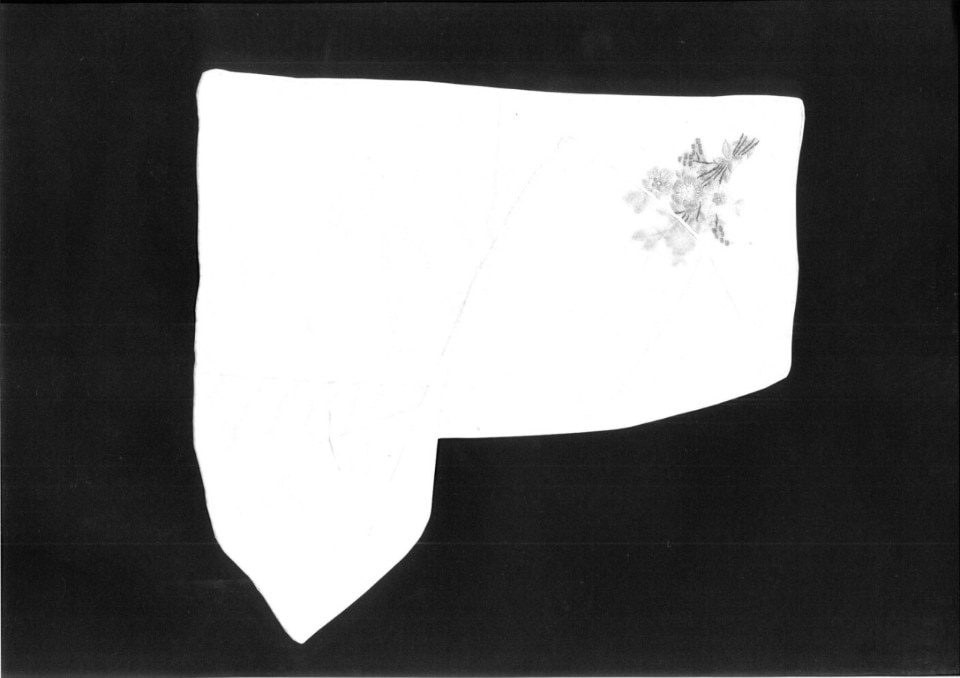
Owned by philanthropists Anita and Poju Zabludowicz, The Zabludowicz Collection, comprising about 500 works, stands as one of the most significant cultural initiatives extending far beyond mere art accumulation. Established in 1994, the collection promotes the development of artists’ practices, including international artworks since the 1960s, with a focus on artists active in Europe and North America from the 1990s to the present. It features pieces by Albert Oehlen, Josh Smith, Rosy Keyser, and Alex Hubbard, as well as emerging artists like Michael Armitage and Avery Singer. The collection also highlights sculpture, with works by Damien Hirst, Sarah Lucas, and Rachel Kneebone, and immersive installations by Haroon Mirza and Toby Ziegler.
In 2007, it inaugurated its London location, offering a program that supports emerging artists and curators, enabling them to engage with the works in the collection, thus establishing itself as a landmark in the field of contemporary art.
12. Sammlung Boros: Boros Collection
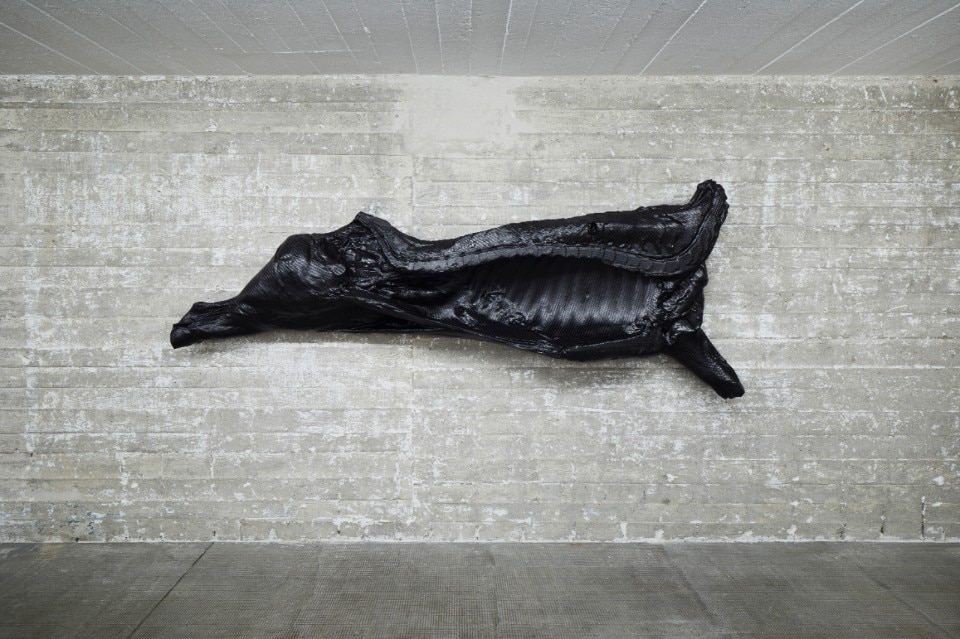
In the heart of Berlin, a former bunker on Reinhardtstraße, hides a rich artistic heritage: the Boros private collection. Where yesterday suffocating tunnels intertwined, today there is a collection of works by international artists like Ai Weiwei, Olafur Eliasson, Alicja Kwade, Michael Sailstorfer, Thomas Scheibitz, Wolfgang Tillmans, and Danh Vo.
Christian Boros, owner of the collection, along with his wife Karen Boros, decided in 2003 to buy this building to transform it into an exhibition space that would host it in all its grandeur. Here, Boros has also chosen to live, in a penthouse he had built on the roof, inspired by the Barcelona pavilion by Mies Van der Rohe. From the outside, the building appears as an impenetrable fortress, with reinforced concrete walls and dark loopholes. Decorative touches of clear Renaissance inspiration recall the building’s original purpose, conceived as a shelter to protect the staff and passengers of Friedrichstrasse station from British bombings. Subsequently, under the Nazi regime, it was transformed into a symbol of Hitler and Speer’s vision of a world capital.
The renovation operation was carried out by architects Jens Casper, Petra Petersson, and Andrew Strickland, who practically had to gut the building. The final result is a space that retains all its previous identities, with sudden openings on the artworks in a path of double spiral staircases, corridors, sudden voids, and claustrophobic rooms. The Boros Collection thus becomes an emblem of the transformation of the city of Berlin and, through works that often reflect on themes of control and freedom, of the different and contrasting phases it has experienced.
13. Marciano Art Foundation

The Marciano Art Foundation is a non-profit artistic foundation based in the Mid-Wilshire district of Los Angeles, California. Owned by Guess co-founders Maurice and Paul Marciano, the foundation opened its doors to the public in 2017 with a collection consisting of 1,500 contemporary artworks.
The Marciano collection reflects not only artistic trends but also the social problems and challenges of our time. Through the varied acquisition of works produced by established international artists, mid-career, and emerging, including Tomas Saraceno, Gabriel Sierra, Goshka Macuga, Jpw3, and Wyatt Kah, it serves as a significant reference point for understanding contemporary art and its impact on the global social and cultural context.
The venue was selected due to a suggestion by artist Alex Israel in 2013: it is the former Scottish Masonic Temple, purchased for $8 million. It is being transformed into an exhibition space by architect Kulapat Yantrasast of Why Architecture and Design. With 110,000 square feet spread over four floors, the structure is comparable, in size, to The Broad. At the entrance, a 5,000-square-meter sculpture garden houses works by Oscar Tuazon, Danh Vō and Thomas Houseago, among others.
14. Valeria Napoleone
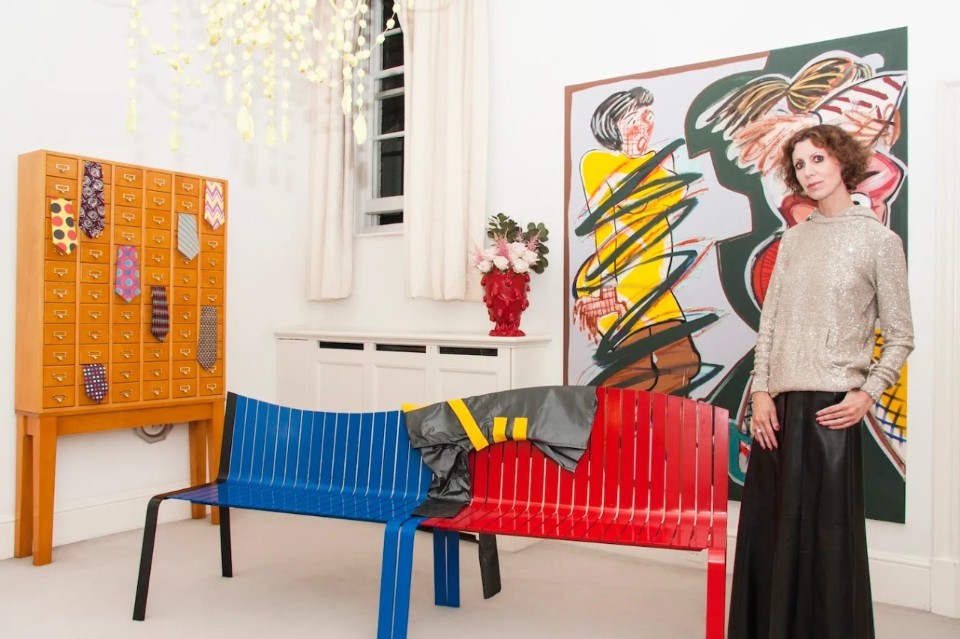
Valeria Napoleone is one of the pioneering collectors who have chosen to focus on promoting women artists from the 1970s to the present. Since the 1990s, her collection, now numbering nearly 500 works, reflects an accurate view of the production of women artists such as Ghada Amer, Lise Soskolne, Martha Friedman, Judith Hopf, Frances Stark, and Andrea Büttner. These singular artworks probe our era and our relationship with clichés, sexuality, economy, and freedom. “I became a collector in the right place at the right time, in New York in the 1990s, a time when the city was full of artists. It was the epicentre of contemporary art. A significant number of women, such as Cindy Sherman, were attracting attention,” the collector recounted.
Napoleon stands out for her feminist efforts and actively contributes to creating a community of women of various ages and nationalities. Their diverse practices coalesce around the values of courage and audacity, far from the dictates of the art market. More than just a collector, Napoleone is also a philanthropist who encourages the production of books and catalogues for solo exhibitions of female artists.
Napoleone’s collection is more than just a gathering of artworks; it’s an active commitment to building a more inclusive and accessible future.
Opening image: Pinacoteca Agnelli, interiors, view of the works of Henri Matisse

